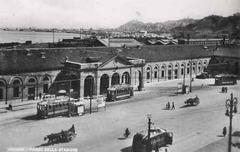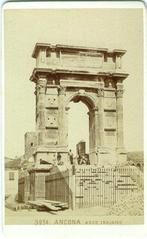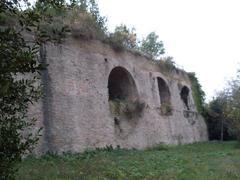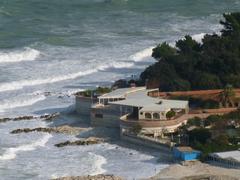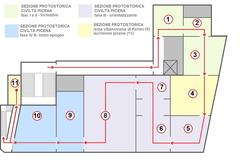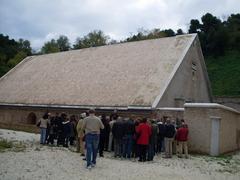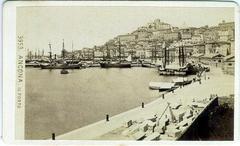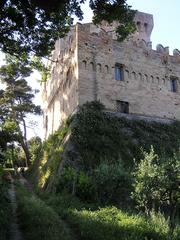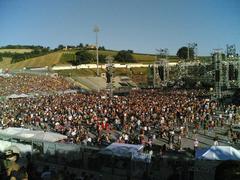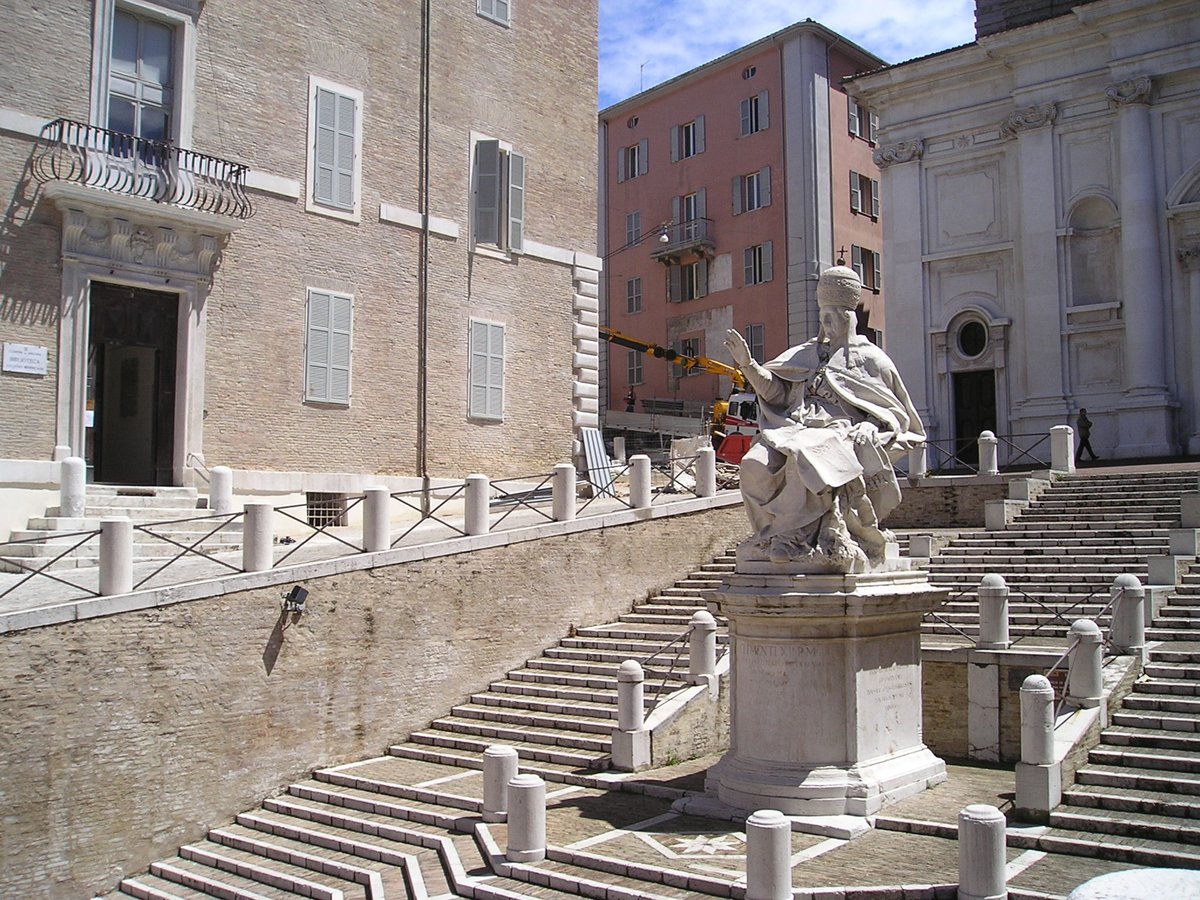
Statue of Clement XII Ancona: Visiting Hours, Tickets, and Historical Information
Date: 14/06/2025
Introduction
At the vibrant heart of Ancona’s historic center stands the Statue of Clement XII, a compelling emblem of the city’s 18th-century economic revival and enduring cultural heritage. Commissioned in 1737–1738 and sculpted by the renowned Baroque artist Agostino Cornacchini, this marble monument honors Pope Clement XII (Lorenzo Corsini), whose pivotal policies transformed Ancona’s destiny by granting it free port status in 1732. This decree spurred maritime trade and urban renewal, establishing Ancona as a prominent Adriatic hub. The statue’s relocation from its original intended site in Rome to Ancona’s Piazza del Plebiscito—also known as Piazza del Papa—reflects the city’s gratitude for the Pope’s transformative legacy. Surrounded by architectural landmarks like the Church of San Domenico and the Palazzo del Governo, the statue serves as a dramatic focal point and a living testament to Ancona’s layered history and artistic achievement.
This comprehensive guide explores the statue’s historical context, artistic features, visitor information—including hours, ticketing, and accessibility—as well as practical travel tips and nearby attractions. Whether you are an art enthusiast, history buff, or a curious traveler, this article offers all you need to plan a memorable visit to one of Italy’s treasured Baroque monuments. (Ancona Tourism, Comune di Ancona, Wikipedia - Piazza del Plebiscito)
Contents
- Introduction
- Origins and Commissioning of the Statue
- Placement in Piazza del Plebiscito
- Artistic and Architectural Context
- Clement XII’s Impact on Ancona
- Visiting the Statue: Hours, Tickets, and Accessibility
- Nearby Attractions and Travel Tips
- Artistic Restoration and Preservation
- Artistic Legacy and Broader Influence
- Contemporary Cultural Role
- Frequently Asked Questions (FAQ)
- Conclusion
Origins and Commissioning of the Statue
The Statue of Clement XII was commissioned in 1738 as a tribute to Pope Clement XII, who played a crucial role in Ancona’s resurgence by granting it free port status in 1732. Born Lorenzo Corsini (1652–1740), Clement XII was noted for his ambitious reforms and building projects across the Papal States, including Ancona, even after losing his sight in 1732 (Britannica - Clement XII). The statue, crafted by Agostino Cornacchini, was initially intended for Rome’s Basilica of San Giovanni in Laterano but was brought to Ancona due to structural concerns and the city’s request (Wikipedia - Piazza del Plebiscito).
Placement in Piazza del Plebiscito
Piazza del Plebiscito, affectionately called Piazza del Papa, has been Ancona’s central civic hub since the 15th century (Wikipedia - Piazza del Plebiscito). Although there was an initial plan to place the statue atop the Arco Clementino—an arch designed by Luigi Vanvitelli at the port—concerns about the arch’s structural capacity led to its prominent installation in the heart of the piazza. The central placement underscores the city’s appreciation for Clement XII’s enduring influence.
Artistic and Architectural Context
Cornacchini’s marble statue depicts Clement XII in full papal regalia, right hand raised in benediction, left holding the papal cross. It stands atop a pedestal adorned with scrolls and the Corsini family crest, reinforcing both papal authority and family pride (Ancona Tourism). The piazza’s multi-level design, flanked by the Church of San Domenico (by Carlo Marchionni, 1763) and the medieval Palazzo del Governo, provides a dramatic setting and enhances the statue’s visibility and symbolic importance.
Clement XII’s Impact on Ancona
Clement XII’s 1732 decree designating Ancona a free port exempted the city from customs duties, attracting merchants and catalyzing economic growth (Britannica - Clement XII, Wikipedia - Piazza del Plebiscito). The Pope also commissioned Luigi Vanvitelli to modernize the port, further securing Ancona’s prosperity. The statue stands as a civic monument to this transformative period, symbolizing gratitude for the papal reforms that shaped Ancona’s future.
Visiting the Statue: Hours, Tickets, and Accessibility
- Visiting Hours: Piazza del Plebiscito is an open public space accessible year-round, 24 hours a day.
- Tickets: No entrance fee is required; the statue and piazza are freely accessible.
- Accessibility: The piazza features ramps and flat paving. While some areas have stairs, the main terrace with the statue is reachable via ramps, making it accessible to visitors with mobility needs.
- Guided Tours: Local operators offer walking tours that include the statue; these can be booked online or at tourist offices.
- Special Events: The piazza is a venue for cultural events, concerts, and festivals, especially in spring and summer. Check the Ancona tourism website for updates.
Nearby Attractions and Travel Tips
When visiting the Statue of Clement XII, explore these nearby sites:
- Arco Clementino: Monumental port arch by Luigi Vanvitelli.
- Church of San Domenico: Baroque church adjacent to the piazza.
- Palazzo del Governo: Historic government building from the 14th century.
- Ancona Cathedral: Romanesque church with panoramic city views.
- Mole Vanvitelliana: 18th-century pentagonal fortress and cultural venue.
Travel Tips:
- Visit in the morning or late afternoon for ideal lighting and fewer crowds.
- Enjoy local cuisine at the cafés and restaurants lining the square.
- The piazza is within walking distance of public transport and parking.
Artistic Restoration and Preservation
The statue has survived considerable historical turbulence. During the French occupation in 1797, Jacobins attempted to destroy it, but it was saved by concealment in San Domenico’s convent, later restored to public view in 1818 (Comune di Ancona). World War II bombing caused further damage; in 1947, it was restored by sculptor Vittorio Morelli, who reconstructed the head and arms, demonstrating Ancona’s commitment to preserving its heritage.
Artistic Legacy and Broader Influence
The statue is a notable example of Baroque papal portraiture and public monument tradition in Italy. Statues of Clement XII were erected in other cities, but Ancona’s stands out for its scale, artistic merit, and civic symbolism (Rome Art Lover). Cornacchini’s dynamic style, influenced by Bernini, imbues the monument with expressive realism and dignity.
Contemporary Cultural Role
Today, Piazza del Plebiscito is a lively social and cultural center, with the statue as its focal point. The square hosts public events, concerts, and celebrations (Savoring Italy). The monument connects Ancona’s past with its present, embodying the city’s resilience, openness, and civic pride (The Crazy Tourist).
Frequently Asked Questions (FAQ)
Q: What are the visiting hours for the Statue of Clement XII?
A: The statue is in an open public piazza accessible 24/7; daytime visits are recommended.
Q: Is there an entrance fee?
A: No, access is free.
Q: Are guided tours available?
A: Yes, most guided tours of Ancona include the statue.
Q: Is the area accessible for those with mobility challenges?
A: Yes, the piazza features ramps and is generally accessible.
Q: What other attractions are nearby?
A: Arco Clementino, Mole Vanvitelliana, Palazzo del Governo, and Church of San Domenico.
Visuals and Digital Resources
High-quality images and virtual tours are available on Ancona Tourism and Wikimedia Commons, allowing visitors to preview the site and plan their trip.
Practical Visitor Information
- Location: Piazza del Plebiscito, Via Scosciacavalli 1, 60121 Ancona.
- Accessibility: Flat, paved, and generally accessible.
- How to Get There: Well-connected by public transport and walking routes from the train station and port.
- Nearby Amenities: Cafés, restaurants, and shopping streets surround the square; public restrooms nearby.
- Best Time to Visit: Spring and autumn for pleasant weather and fewer crowds; evenings for illuminated views.
Summary and Recommendations
The Statue of Clement XII is both a masterpiece of Baroque art and a symbol of Ancona’s historical transformation. Its central location in Piazza del Plebiscito—flanked by significant landmarks and lively local life—makes it an essential stop for visitors. Explore the statue as part of a broader walking tour, join a local event in the piazza, and use digital guides or the Audiala app for an enriched experience. Take time to appreciate not just the artistry of the monument, but its deep connection to Ancona’s civic identity and maritime heritage.
References and Further Information
- Ancona Tourism – Statue of Clement XII
- Comune di Ancona – Statua Clemente XII
- Comune di Ancona – Piazza del Plebiscito
- Nomadic Samuel – Ancona Travel Guide
- Wikipedia – Piazza del Plebiscito (Ancona)
- Britannica – Clement XII
- The Crazy Tourist – Best Things in Ancona
- Savoring Italy – Ancona
- Wikimedia Commons – Statue of Clement XII in Ancona
- Rome Art Lover – Clement XII Monuments
Explore Ancona’s rich history and plan your visit to the Statue of Clement XII today. For more travel tips and audio guides, download the Audiala app and follow official tourism channels for up-to-date information on events and guided tours.


